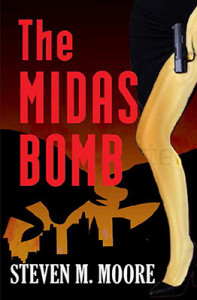Hello. How are you?
“Fine. Thank you.” Seven words travelers often learn when visiting countries outside the US. Maybe even more if they’re brushing up on a language learned long ago, either in courses or via total immersion somewhere. It’s a polyglot world.
There are over 800 languages spoken in NYC. This polyglot nature of the Big Apple can cause problems for the foreign traveler to the city. Most signage is in both English and Spanish, but what do speakers of other languages do? Most who live in the NYC urban area speak some English, but visitors? Maybe not.
So let’s consider “cultural appropriation.” Is including snippets from other languages in our books wrong? If you answer yes, will you go even further and call it cultural appropriation? And what about characters with a cultural background who speak those other languages…or anything but English?
Language is part of culture, and fiction writers consider all sorts of cultures in their books. I often include snippets of Spanish, but there’s even some Russian in No Amber Waves of Grain. I even consider ET cultures—Rangers, Tali, and Usk in The Chaos Chronicles Trilogy Collection, and Fistians in The Secret of the Urns (A.B. Carolan was inspired by one of my short stories). They have their own languages and cultures. The Rangers’ language is so complex that a speedy AI is needed to translate it.
I don’t apologize for these snippets, and I don’t apologize about creating characters with other cultural backgrounds. In fact, I insist the snippets add necessary cultural background to the story. I don’t expect the reader to know the languages either. No one needs a translation of “Hasta la vista, baby,” but, if a snippet is obscure, I’ll translate it in some way that integrates into the story.
Common food names often aren’t English. “Baklava” is used in Rembrandt’s Angel; “strudel” is used in the sequel, Son of Thunder (soon to be published by Penmore Press). That brings us full circle to NYC where most people know both words.
Okay, you’re not from the NYC area. If I were writing fifty years ago, I might not want to use those words. But America has become more homogeneous over the last five decades, via TV, movies, the internet—and yes, books. Like it or not, globalism exists. We cannot ignore other cultures. English has grown accordingly, as has every language, because business, cultural events, and many other things depend on it.
Books aren’t the only ways to travel around the world. They provide a means to understand the world. I learned more about Chinese culture in the third Bourne book (not the movie), Donna Carrick’s The First Excellence, and Cixin Liu’s The Three-Body Problem than I could ever learn by any other means except going to that country and living there for a time. Truth be told, I never want to go to China because of its political conditions, not even as a tourist, but I can try to understand Chinese culture through books.
I embrace other cultures in my reading and writing. They fascinate me. That doesn’t mean that I practice cultural appropriation. It means that I recognize we are all humans flying along on Spaceship Earth, each one of us an individual with a cultural background. The latter might be disappearing as the planet becomes more homogenized, but we can still celebrate the cultural differences…and those include language.
***
Comments are always welcome.

“Detectives Chen & Castilblanco Series,” the NYC novels. In The Midas Bomb, terrorism and Wall Street excesses go hand-in-hand, with an evil genius lurking in the wings. In Teeter-Totter Between Lust and Murder, Castilblanco is out to prove that Chen is innocent of murder. In The Collector, the detectives find that sex trafficking and stolen art provide an unusual mix. And in Family Affairs, Castilblanco helps some family members who are in trouble. All these ebooks are available on Amazon and Smashwords and the latter’s affiliated retailers (Apple iBooks, B&N, Kobo, etc.). Current, pithy, and exciting, this is great summer reading!
Around the world and to the stars! In libris libertas!
